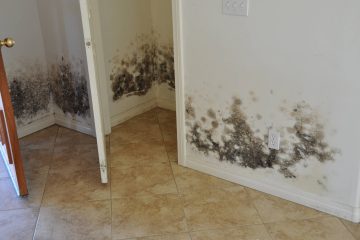Mold is sneaky. It doesn’t always show up in plain sight, and by the time you see or smell it, it may have already spread. While bathrooms and basements are known mold magnets, there are many hidden places where mold forms that most homeowners never think to check. At Commando Restoration, we’ve seen how quickly unseen mold can cause damage—not just to your property, but to your health.
Understanding where mold likes to hide can help you catch problems early and avoid costly remediation. Here are 9 overlooked spots that deserve your attention.
1. Inside Walls and Behind Drywall
Leaks from plumbing or roof issues often go unnoticed behind walls. The drywall absorbs moisture, creating the perfect environment for mold to thrive. If you notice musty odors or wall discoloration, mold could be hiding behind the surface.
2. Under Sinks and Around Plumbing Fixtures
Kitchens and bathrooms are common problem areas. Slow leaks from faucets, pipes, or garbage disposals may not be visible but can lead to significant mold growth under the cabinet or behind the sink.
3. Behind Appliances
Large appliances like refrigerators, dishwashers, and washing machines can trap moisture. Condensation or minor leaks behind these units often go unnoticed. Regularly pull appliances away from the wall to inspect and clean the area.
4. HVAC Systems and Ductwork
Your heating and cooling system can spread mold throughout your home if spores develop in damp ductwork or near condensation coils. Musty smells from vents or allergy symptoms when the system runs could be signs of hidden mold.
5. Beneath Flooring and Carpets
Carpets and pads can absorb moisture from spills, floods, or humidity. If water seeps below the surface, mold can develop underneath—even if the top layer feels dry. This is especially common in basements and entryways.
6. Window Frames and Sills
Condensation builds up on windows during humid months, especially in Florida. If not wiped away, this moisture can settle into wooden frames or wall cavities around the window, creating a mold risk over time.
7. In Attics and Crawl Spaces
Poor ventilation, roof leaks, and high humidity levels make attics and crawl spaces perfect environments for hidden mold. These areas are rarely inspected, giving mold time to spread unnoticed.
8. Inside Closets and Behind Furniture
Closets with poor airflow and dark corners can trap moisture, especially if they share walls with bathrooms or exterior surfaces. Similarly, furniture pressed against walls can create humid pockets where mold may form undisturbed.
9. Washing Machine Gaskets and Shower Curtains
Front-loading washers often retain water in the rubber door gasket, making them prone to mold. The same applies to plastic shower curtains and liners, which need regular cleaning to prevent mold buildup.
What You Can Do to Prevent Mold in Hidden Places
- Use dehumidifiers to maintain indoor humidity below 60%
- Inspect plumbing and appliances regularly for leaks
- Improve airflow in closets, basements, and behind furniture
- Clean gutters and rooflines to prevent water seepage
- Schedule regular mold inspections, especially after storms or floods
If you suspect mold in one of these hidden areas, don’t wait. Mold spreads quickly and can affect your indoor air quality, trigger allergies, and compromise structural integrity. At Commando Restoration, we offer professional inspection and remediation services to help you stop mold before it causes serious damage.
It’s not just about what you see—it’s about what you don’t. Keep an eye on these hidden places where mold forms and take action early to keep your home safe and healthy.
